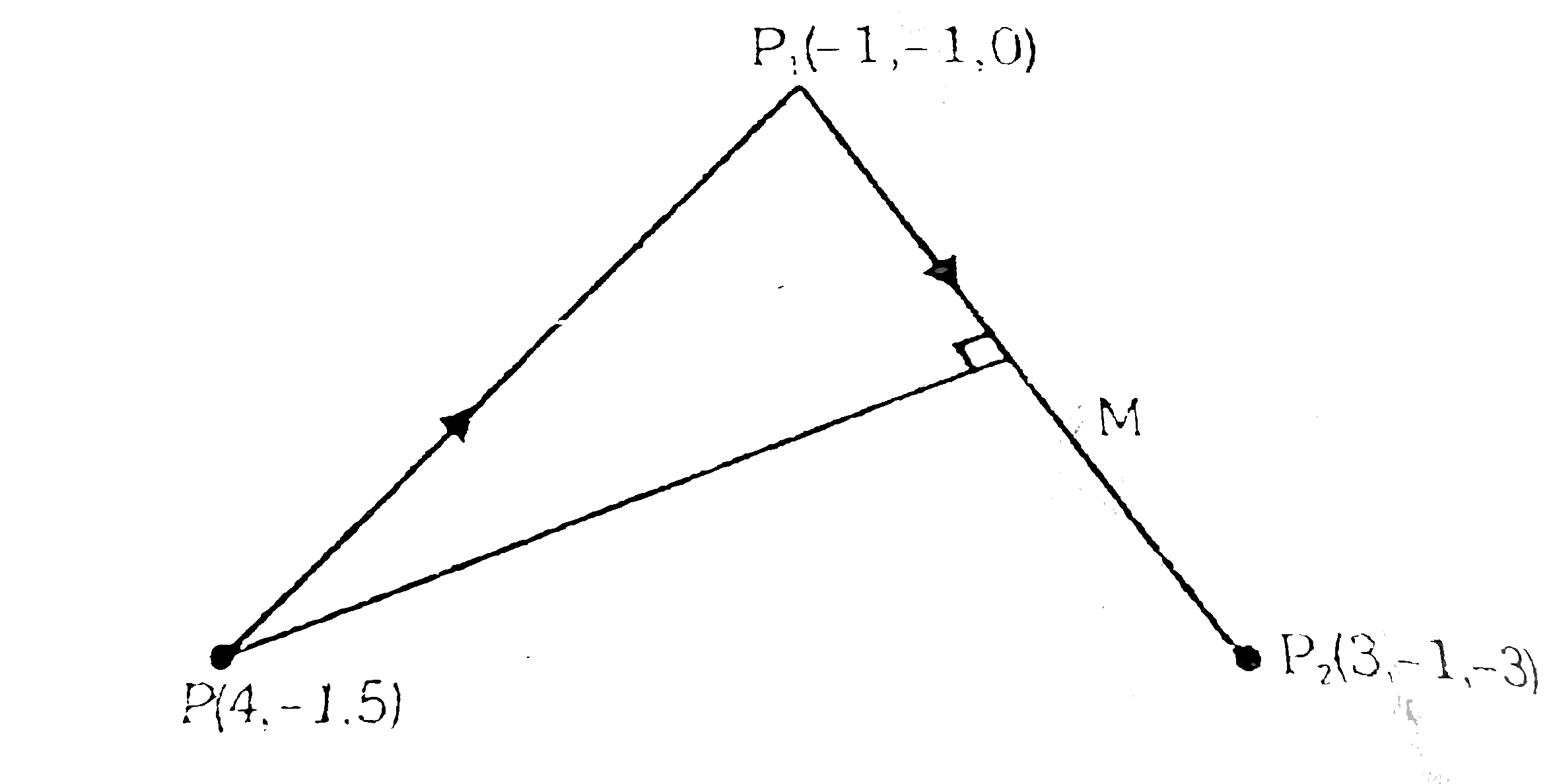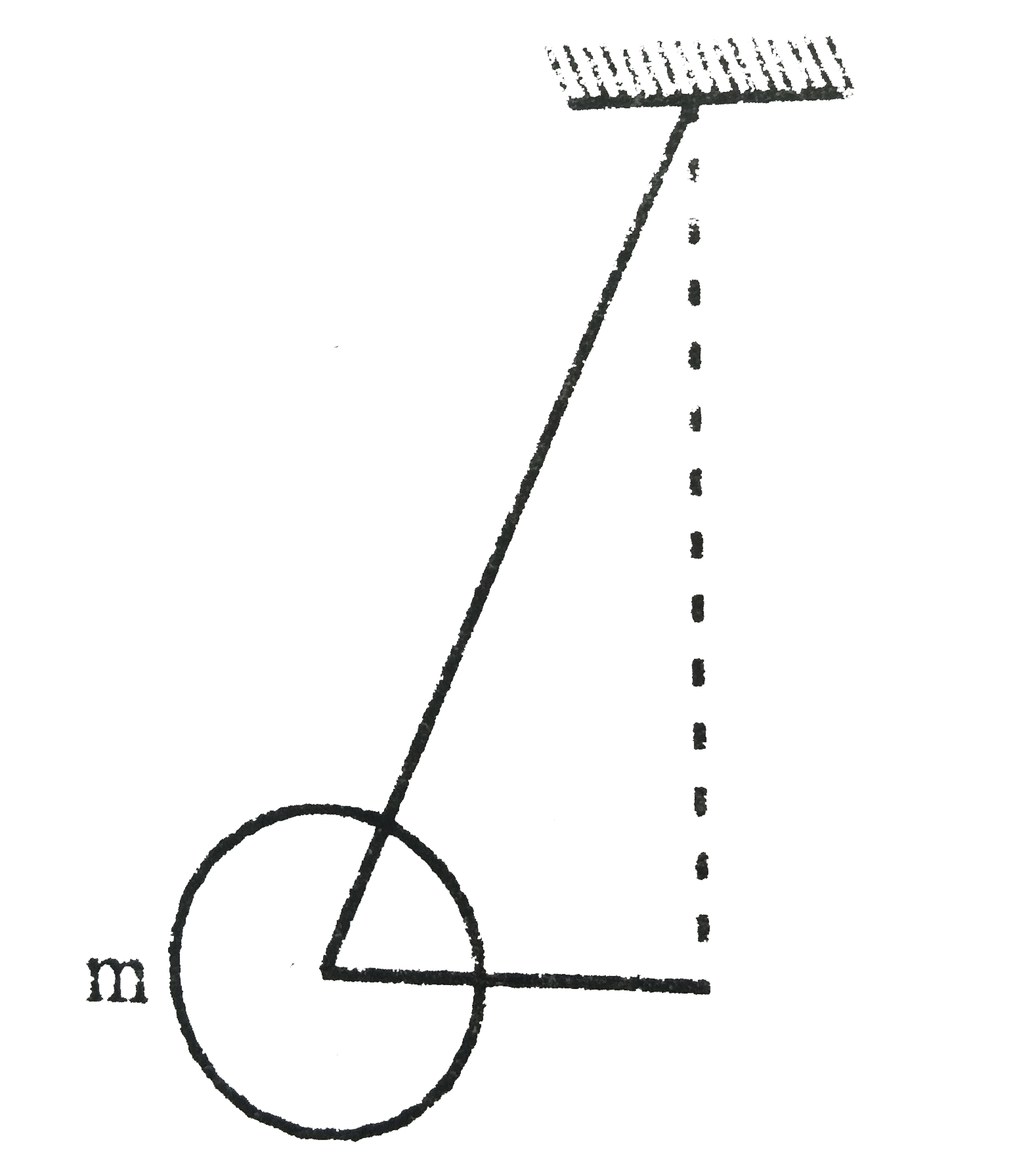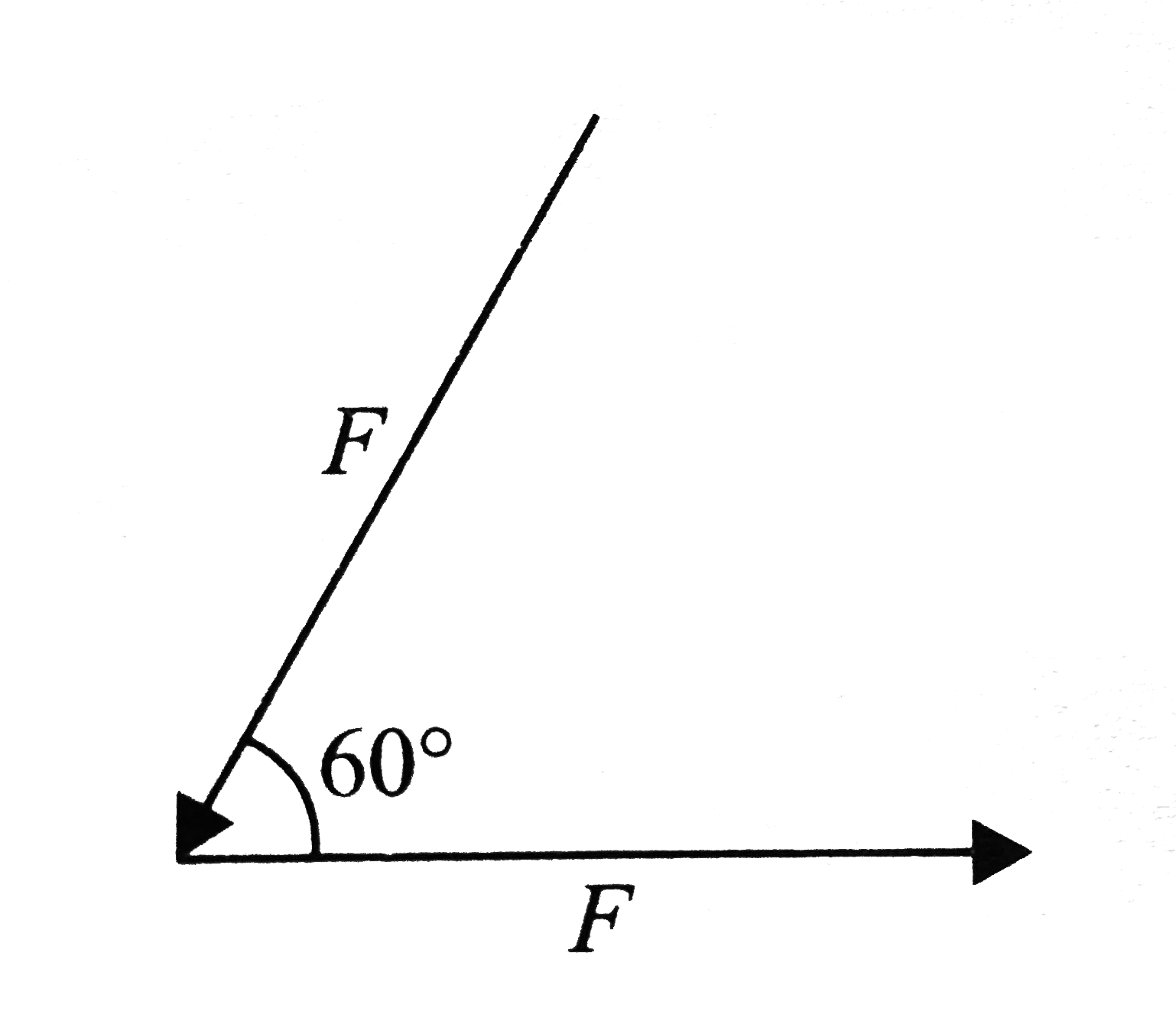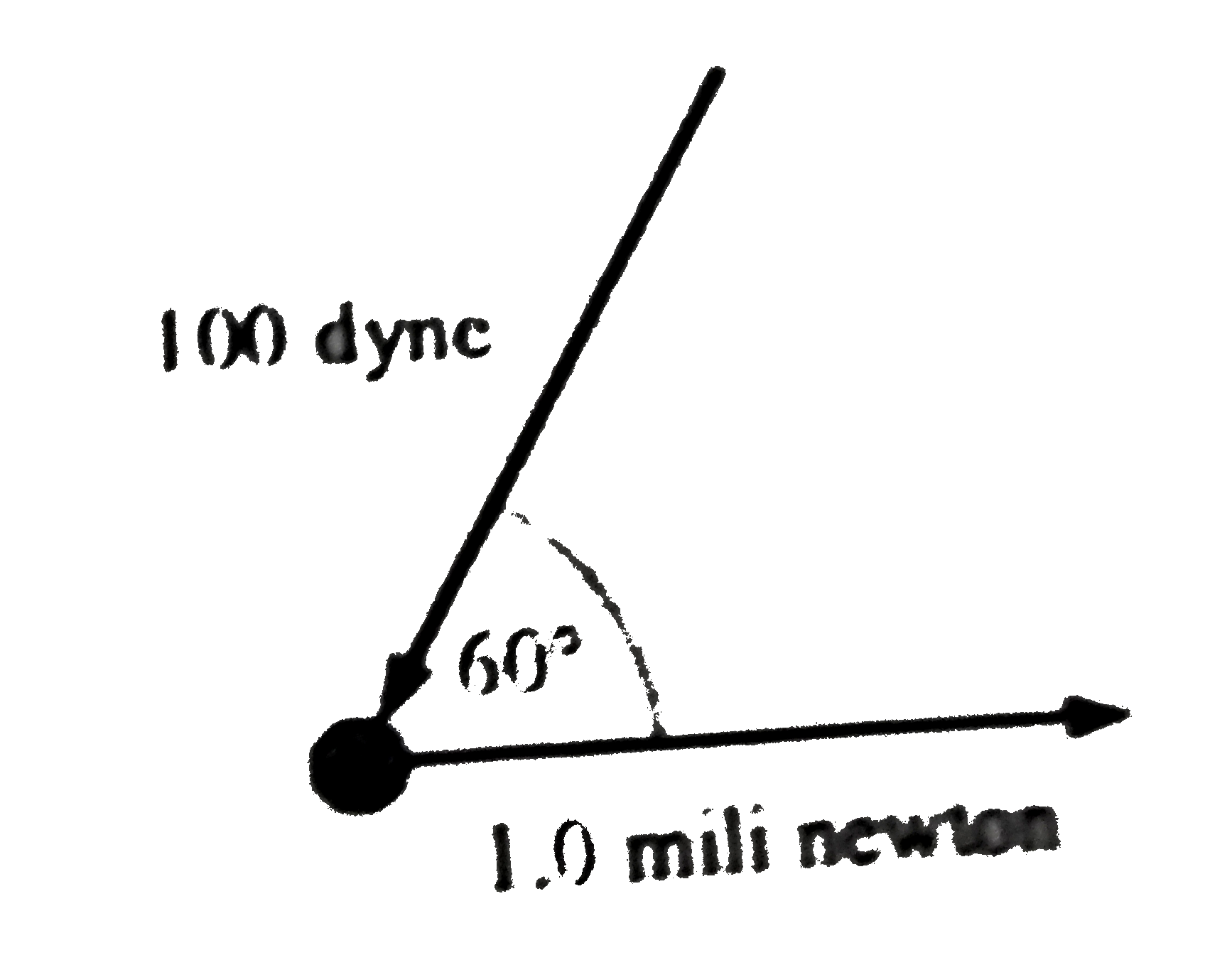Two force each numerically equal to 10 dynes are acting as shown in the figure, then find resultant of these two vectors.Solution in Gujrati
The correct Answer is:3.5s
Vector −−→PP1=−5ˆi−5ˆk and −−−→P1P2=4ˆi−3ˆk

Let angle between these vectors be θ then
cosθ=(−5ˆi−5ˆk).(4ˆi−3ˆk)(5√2)(5)=−15√2
as PM=PP1sinθ
so PM=(5√2)(75√2)=7m
Therefore t=7m2m/s=3.5s
Topper's Solved these Questions
- BASIC MATHSBook:ALLEN Chapter:BASIC MATHSExercise:EXERCISE-5(A)
Explore 15 Videos
- BASIC MATHSBook:ALLEN Chapter:BASIC MATHSExercise:Exersice -05(B)
Explore 20 Videos
- BASIC MATHSBook:ALLEN Chapter:BASIC MATHSExercise:Exercise-04 [A]
Explore 28 Videos
- AIIMS 2019Book:ALLEN Chapter:AIIMS 2019Exercise:PHYSICS
Explore 38 Videos
- CIRCULAR MOTIONBook:ALLEN Chapter:CIRCULAR MOTIONExercise:EXERCISE (J-A)
Explore 6 Videos
Similar Questions
The forces, which meet at one point but their line of action do not lie in one plane,are called
View SolutionA vector of length l is turned through the angle θ about its tail. What is the change in the position vector of its head ?
View SolutionThe direction cosines of a vector ˆi+ˆj+√2ˆk are:-
View SolutionA simple pendulum executing SHM in a straight line has zero velocity at 'A' and 'B' whose distances form 'O' in the same line OAB are 'a' and 'b'. If the velocity half wat between them is 'v' then its time period is
View SolutionA ball of mass (m)0.5kg is attached to the end of a string having length (L)0.5m. The ball is rotated on a horizontal circular path about vertical axis. The maximum tension that the string can bear is 324N. The maximum possible value of angular velocity of ball (radian/s) is -
 .
.
View SolutionTwo forces, each equal to F, act as shown in (figure) Their resultant is

View SolutionThe resultant of two equal forces acting at right angles to each other is 1414 dyne. Find the magnitude of either force.
View SolutionTwo forces of 4 dyne and 3 dyne act upon a body . The resultant force on the body can be only be :
View SolutionTwo forces act on a particle simultaneously as shown in the figure. Find net force in milli newton on the particle. [Dyne is the CGS unit of forces ]

View SolutionTwo forces each numerically equal to 5N are acting as shown in the figure, then find resultant of these two vectors.
View SolutionTwo forces each numerically equal to 10 dynes are acting as shown in the following figure, then their resultant is -
View SolutionTwo forces of 4 dyne and 3 dyne act upon a body. The resultant force on the body can only be –
View SolutionThe forces, each numerically equal to 5 N, are acting as shown in the Figure. Find the angle between forces?
View SolutionTwo forces , each numerically equal to 10 dyne are acting as shown in the following figure Their resultant is :
View Solutionदो बराबर बल एक दूसरे के लम्बवत् कार्यरत है। इनका परिणामी बल 14.14 है। प्रत्येक बल का परिमाण ज्ञात कीजिए।
View Solutionदो बलों जिनमें प्रत्येक का संख्यात्मक मान 10 डाइन के बराबर है चित्र में दर्शाये अनुसार लग रहे हैं। इन दोनों बलों का परिणामी ज्ञात कीजिए।
View Solution
